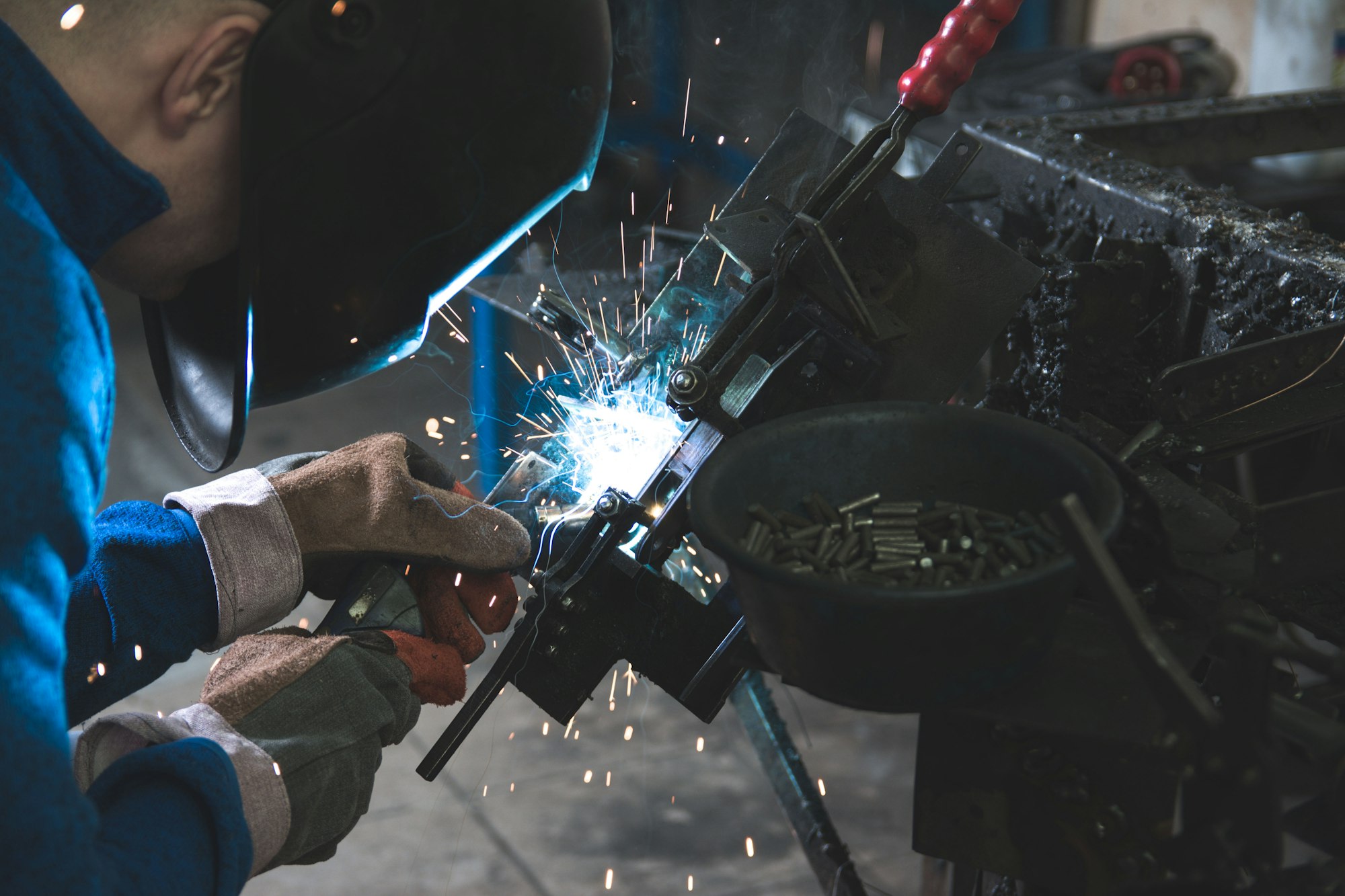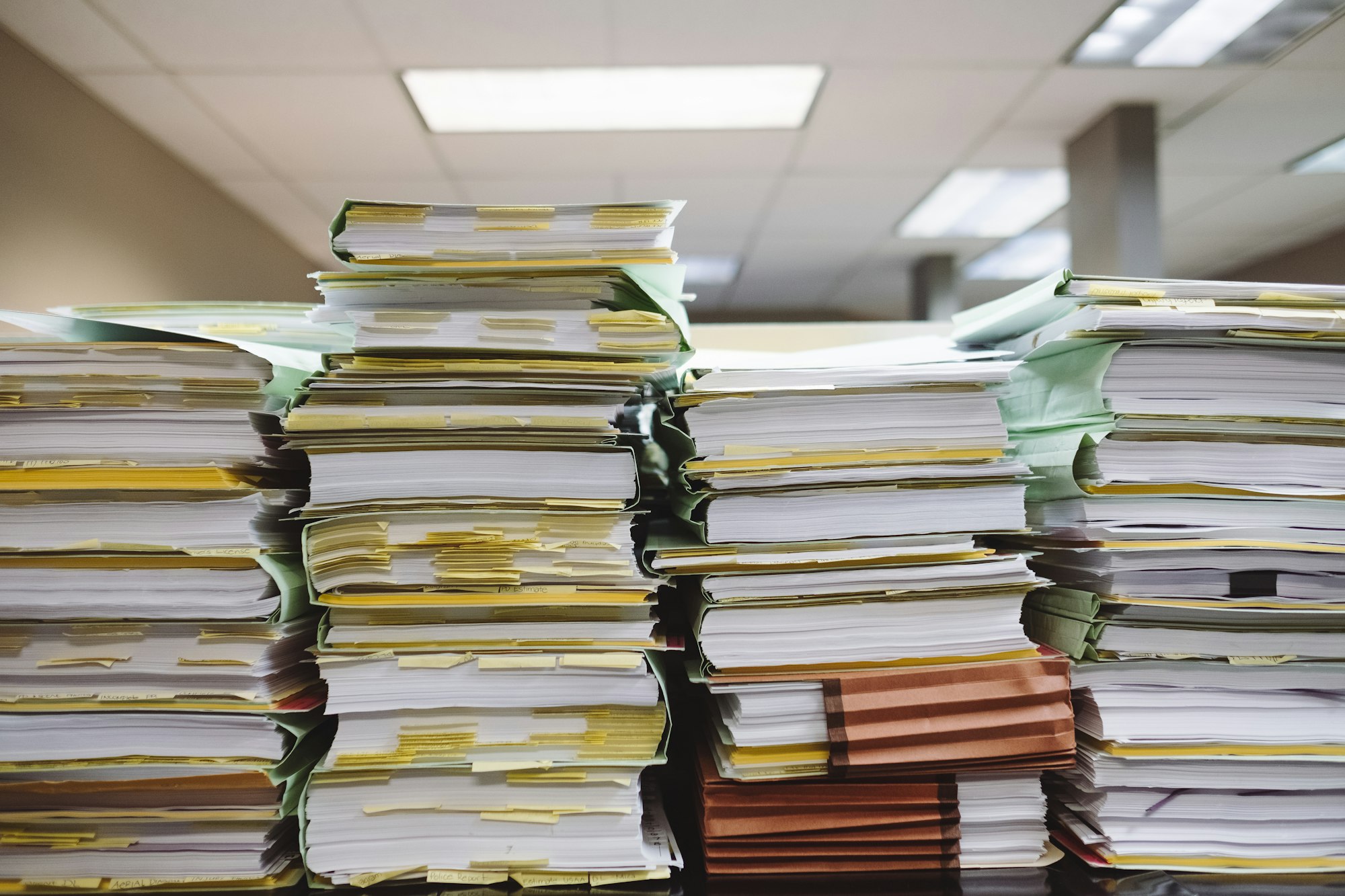Patents, copyright, and trademarks are terms you have come across and even probably used interchangeably. However, they don’t mean the same thing, but they all refer to intellectual property. According to the World Intellectual Property Organization (WIPO), intellectual property refers to creations of the mind that are unique and potentially valuable. Such creations include inventions, literary works, artistic works, discoveries, symbols, names images, etc.

It is important to note that intellectual property doesn’t only refer to an idea. Rather - it is how the concept manifests itself in an end product which will be protected by relevant laws. Having intellectual property rights means you have the right to manufacture, license, publish, or use certain symbols as the owner.
There are three distinct types of intellectual property. They are Copyright, Trademarks, and Patents. This guide will explore the differences between the three laws governing them and also look at how long each lasts from the point of registration.
Table of Contents
• Patents
• Requirements for Obtaining a Patent
• Requirements to Obtain Copyright
• Benefits of Registering your Work with the Copyright Office
• Requirements for Trademark Registration
• Restrictions on what to trademark
• Patent, Copyright, Trademark FAQs
Patents
A patent is a monopoly granted by the government to an inventor to exclude other people from using the invention for a fixed period. The inventor has the exclusive rights to manufacture, sell, license the invention. In the U.S., the federal government grants 20 years for a patent. After this period, the monopoly is lifted, and other people can use the invention.
Patents are used to encourage innovations that will help move society forward. The inventor is assured that the government will protect their rights to recoup their investments into the innovation and earn from it. Not all innovations are patentable. In the U.S., a patent is given by the U.S. Patent and Trademark Office, commonly known as USPTO. Once an innovator has been granted a patent, nobody can use the innovation without their permission. If they do it, they are liable to a lawsuit, which may result in substantial damages.

Patents are not granted to mere ideas; the inventor has to demonstrate how the idea is implemented. You cannot obtain a patent for illegal or unsafe activities/products. Note of course that getting a patent issued for your invention is merely half the battle. Enforcing your patent is an entirely different issue that you need to be aware of before applying for one. To learn more about patent enforcement issues, check out this 3-minute video from The Federalist Society.
Requirements for Obtaining a Patent
There are three broad requirements that your invention is subjected to when applying for a patent. These are generally observed in all jurisdictions, including the International Patent Law Treaty and these typical parts of patent application include:
Novelty
This means that the invention shouldn’t be available to the public in any way before applying for a patent. This includes even any description of the invention in any publication. The only publication allowed is that by the inventor in a specified period before the application of the patent. The invention has to be precisely described in one document.
Inventiveness
In patent law, inventiveness means that the invention should not be apparent to a person averagely skilled in the art. Simply put, the idea should have an inventive step to it from the existing art or documentation.
Industrial application
In some jurisdictions, such as the U.S., this may be known as utility. The innovation must have some utility or industrial application to be patentable.
Types of Patents
There are three main types of patents in many jurisdictions including in the U.S. They are:
- Utility patents
- Design patents
- Plant Patents
Utility Patents
Utility patents are new inventions that are not in use by any other person and are not obvious. If you believe you have such a design, it would be prudent to patent it. However, it is vital to be sure of your system, as many requests for patents are not granted.

Most patents fall in this category of patents. Utility patents are granted for 20 years. Under utility patents, there are the following categories:
• Machine
• Process
• Manufacturing
• Composition of matter
• Improvement of an existing idea
Sometimes, an invention may fall under more than one class of utility patents. However, you will get just one patent for it. As the most popular type of patent, virtually all patents you may think of fall here. They include computer software and hardware, electrical circuits, industrial and home machines, chemical formulas, biological inventions, pharmaceutical inventions, industrial processes, food inventions, cosmetics, and many more.
Design Patents
Design patents are less standard than utility patents. These patents are for unique designs used to produce devices or products and are granted for 14 years. For instance, a chair made from a unique design may qualify for a design patent.

However, design patents must be ornamental or aesthetic, as opposed to the design that is functional in nature.
Plant Patents

Plant patents are not common. They are patents granted to scientists, researchers, or agriculturists who invent a new method of plant reproduction. This must be clearly a new asexual reproduction method not in use currently that results in the production of an exact copy of the plant. Plant patents are good for 20 years.
If your invention doesn’t fall in any of the aforementioned categories , then it is not patentable. Still, it may qualify for a copyright, trademark or be considered a trade secret.
Regardless of the type of patent you will be applying for, your application will go through the United States Patent and Trademark Office (USPTO) at some point. Check out this quick 5-minute video by USPTO Video to get an overview of their patent application process before proceeding to the next section of this guide on how to apply for a patent.
How to Apply for a Patent
The patent application process is tedious and expensive. Many individual inventors tend to give up along the way. Applying for patents across multiple jurisdictions becomes even more complicated. Most patents are owned by big companies. However, this is not to say that a small or medium-sized entrepreneur should give up. If you truly believe you have a unique invention that will confer you an economic benefit, you should not hesitate to patent.
The first step is to fill the patent application form. These forms are available in the patent offices. In the U.S., the U.S. Patent and Trademark Office provides the forms online, like many other jurisdictions. In the application, the invention should be described in enough detail such that a person averagely skilled in the art can understand and reconstruct it.
In the application, a detailed description having figures and any other detail that helps to fully describe your invention so as not to leave any doubts as to what it entails.
Invention Claims
These are what the inventor says are his inventions. They can be as many as the inventor wishes. Usually, a patent application will have numerous claims which will be independently examined. If any of them falls, the others can still stand. The claim is the most important part of the application. This section requires that the inventors contact a patent attorney to help them draft the claims. Your application will succeed based on the strength of your claims.
Copyright

Copyright is another form of intellectual property rights that vest on an individual or entity. Copyright law grants the author of original works in the artistic and literary fields the exclusive rights to publish, reproduce, and sell their original works. It covers areas such as;
- Literary works
- Dramatic works
- Artistic works
Some examples of works that may arise from these categories include songs, movies, photographs, videos, performances, paintings, architectural works, poetry, etc.
Copyright laws are meant to induce and reward authors of creative works by making their work available to the public. The economic rewards that come from this induce other creatives to continue creating such works for the public to enjoy. They are, in turn, protected by the law against theft of their original works. However, an author doesn’t have to make their creative work publicly available even after they have copyrighted it. In the U.S., copyright is registered in the U.S. Copyright Office or online through electronic Copyright Office, eCo. Check out this excellent video guide on how to register your Copyright through the United States Copyright Office.
The owner of the copyright has the rights to;
- Reproduce the work
- Make derivatives of the original work
- Distribute copies of the work by sale, lease or licensing
- Perform or display the work in public
The author can exercise these rights by themselves or transfer or license another entity either in whole or in parts. In the U.S., copyright law is anchored in the constitution and other relevant laws. It vests on the author these rights over their lifetime plus 70 years after death.

Copyright law doesn’t protect the ideas or concepts within an author but rather the material expression of the idea. For your work to be recorded by the copyright office, it has to be in a fixed form. For instance, a book written down on paper is in a fixed form. Similarly, a painting is a fixed form.
Requirements to Obtain Copyright
Before we even get to the specific criteria, we have to underline the fact that unlike patents, copyright vests on an author whether they have registered or not. However, there are numerous benefits of formally registering your copyright. There are three requirements before you can be granted copyright to your work.
Original
Original works are those independently created by the author. Unlike the Novelty requirement in patent law, original work in copyright is not as strict. If the work is independently created, it doesn’t have to be inventive, imaginative, or unique.
Creative
Again in this requirement, the creative basis is broadly interpreted. Almost all literary and artistic works can be deemed creative.
Fixed
As we had observed, all literary and artistic works must be in a material form, so that they are not just an idea or a concept. To satisfy this requirement, artistic work must be in a form that can be perceived, reproduced, or distributed.
Unlike the patent requirements we had discussed earlier, these requirements are very lenient. Most copyright applications go through because of this, unlike patent and trademark applications.
Benefits of Registering your Work with the Copyright Office
Copyright protection is automatic and vests on the creator, even if they have not registered their works. However, there are some reasons why you should register it.

Copyright infringement
If somebody copies, distributes, reproduces, or obtains a benefit from your work, you can take legal action against them. To file a lawsuit for copyright infringement, your work must be registered. However, you can still file for a copyright application even after the infringement has occurred with a view of suing for the infringement. This brings us to the second point
To recover statutory damages and attorney fees in case of an infringement lawsuit
To recover attorney fees and statutory costs in a copyright infringement lawsuit, a copyright registration must have been made three months before the infringement occurred.
To defend yourself against copyright claims
If anybody brings a copyright claim against your work, you can easily defend yourself against it if it was registered. The person who has registered copyright is not the guaranteed owner but has the presumption of ownership in the eyes of the law.
Having a public record
It is important having a public record of your work, which copyright registration gives. It puts other people on notice that your creative work is protected by the law.
Fair use in Copyright Law
In copyright law, there is a concept known as fair use. The law allows a person to use copyrighted works without the owner’s permission for purposes such as education, comment, criticism, news, research, etc. These uses constitute fair use. Most of the time, it is not straightforward to determine whether fair use has been breached. It is more on a case by case basis.
Four factors are established in law to determine fair use:
- Purpose and character of use: this determines whether the use is of a commercial nature or not. Commercial uses are not fair use.
- Nature of copyrighted works: this determines if the originality of the copyrighted works. As we had observed earlier, to obtain a copyright, your work doesn’t have to be original in the strict sense of the word. However, more original works are more protected under fair use.
- Amount used: this is in relation to the whole amount of the copyrighted work. The lesser the proportion used, the likelier it is fair use.
- Effect of the use on the market: this factor explores whether the use will harm current and potential markets
In determining fair use, all these four factors must be weighed together. One factor alone cannot determine fair use. However, the first factor weighs heavier than the others.
Trademarks
The third type of intellectual property we shall discuss is Trademarks. As an entrepreneur, you must have come across trademarks many times. You probably have one or are planning to apply for one. Trademarks are very important to a business. Entrepreneurs invest their time and money in a business, creating a brand, and maintaining a good image of the product so that customers can trust them. Trust leads to lasting business opportunities. Unscrupulous people who have done put in the effort may try to profit from it by using your name, image, or brand. This is what brings about trademarks.
A trademark is any symbol, image, word, sound, visual representation, or their combination used to identify a product or a service. For a service business, they can be known as Service Marks, which means the same thing as a trademark. They are meant to differentiate products in the market and communicate quality. They can also be used as a marketing tool.
Trademarks are registered by the United States Trademark and Patent Office. By using a trademark for a period of time, you are deemed as the owner of it. It is, however, prudent to register it.
Registering for a Trademark
Trademark registration is a straightforward application that an entrepreneur can handle on their own without the help of an attorney. The U.S. Patent and Trademark Office has a website www.uspto.gov which facilitates this online application.
However, you need first to check the Trademark Electronic Search System database if your trademark exists or not. Trademarks are granted to the first entity to register the mark.
Requirements for Trademark Registration
There are only two requirements to complete a trademark registration. The trademark must be;
In use
This means that the product and service must already be in the market. If not already in the market, there must be a demonstrable intent to use.
Distinctive
This means that the trademark has to be distinguishable from another one in the market. Check out this quick trademark application video guide from the United States Patent and Trademark Office to learn more about how you can proceed to register a trademark.
Restrictions on what to trademark
Requirements for a trademark are pretty straightforward, and many unique applications will go through. However, there are some trademarks which can be rejected based on the following grounds
- A living person’s name
- Deceptive marks meant to confuse the public
- Marks containing the coat of arms
- State, government and military insignia
- Descriptive words
- Description of goods
- Geographical description
- Disparaging/scandalous/immoral marks or words
Once a trademark application is approved, it remains valid for ten years. It should be renewed to retain its protection. If any person infringes on a trademark, you have the right to use them and obtain damages. Registered trademarks use the symbol ® to signify ownership.
Patent, Copyright, Trademark FAQs
How is a patent different from a copyright and a trademark?
A patent protects innovations and discoveries while copyright protects original creative works of authorship. Trademarks are words, images, signs, sounds that identify a product in the market. Each of the three has the relevant governing law. Trademarks and patents are registered in the U.S. Trademark and Patent office while copyright is registered by the U.S. Copyright Office
For how long will I be protected after registration.
For patents, an innovator will be protected for 20 years for utility and plant patents and 14 years for design patents. Copyright holders are protected for their lifetime and 70 years after their death. Trademarks are protected almost forever. You just have to renew the registration every ten years, provided the product is still in the market.
I am an employee, and I made an innovation, can I patent it?
No, the innovation belongs to your employer, provided you made it within the course of your duties. For instance, a researcher doesn’t own innovations if they were working for their employer and were adequately compensated. The same applies to copyright.
Do I need an attorney to guide me through the applications?
For copyright, the process is straightforward. For patents, the process is complicated, time-consuming, and expensive. You need a patent attorney to help you with the application.
Are patents, trademarks, and copyright universal?
Patents and trademarks are territorial. They must be applied for in each jurisdiction protection is sought. For copyright, the U.S. has agreements with many other jurisdictions to protect copyright registered by its citizens.
Conclusion
The distinctions between patents, copyrights and trademarks are material for you to determine which of the three you should be applying for. We hope that this guide will be able to save you time and money in the process of applying to protect your intellectual property.


